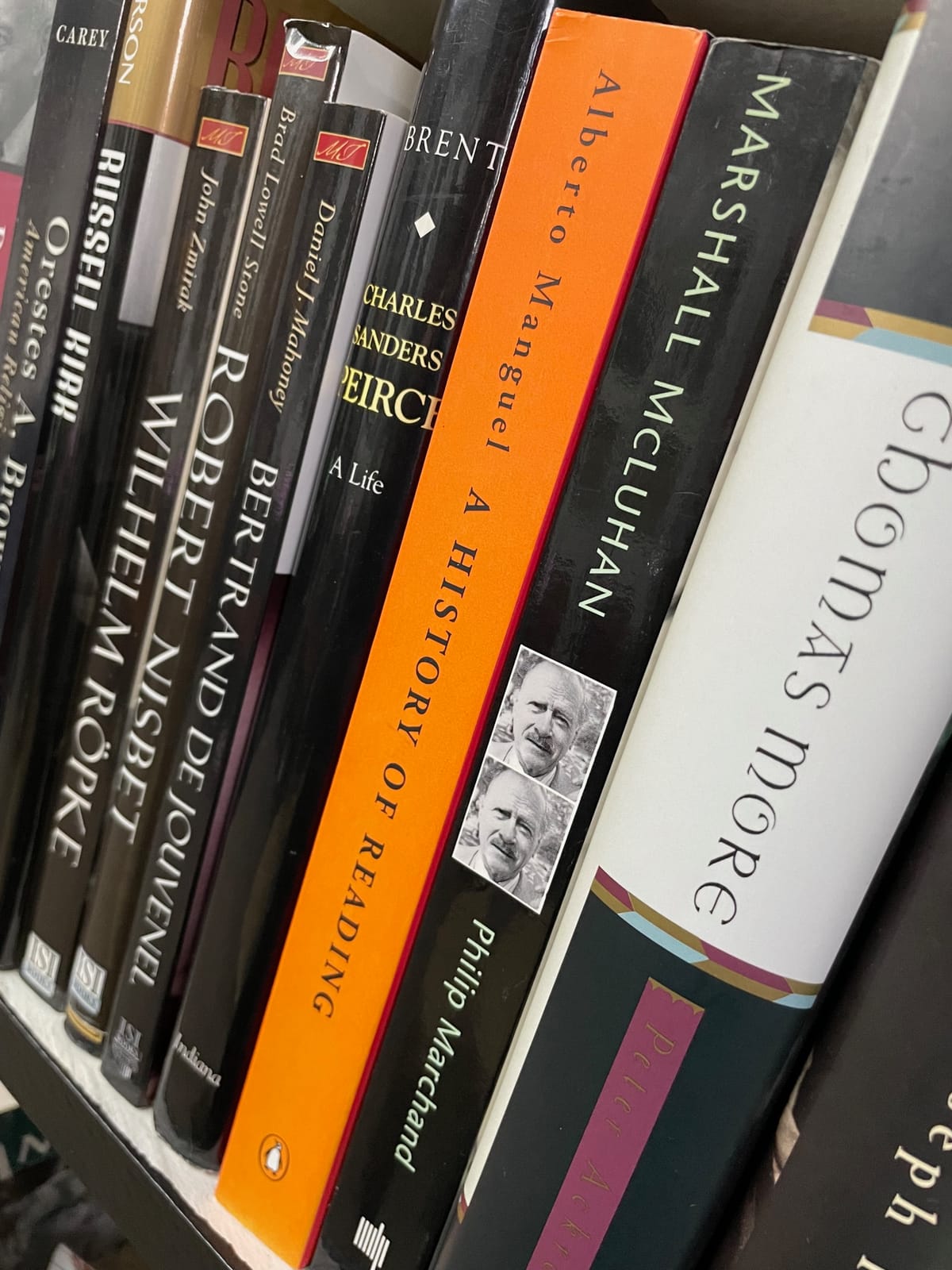What Was Literary Fiction?
Dan Sinykin at The Nation

The strangely short history of a publishing niche
s an English professor, I’m often asked, “What do you like to read?” Sometimes I answer, “Literary fiction.” By that phrase, I mean fiction that privileges art over entertainment. I did not know until recently that literary fiction—the phrase, not what it stands for—grew up with me. We’re about the same age. And while I hope I’m only midway through my life, literary fiction might be dead. More precisely, what might have died is literary fiction as a meaningful category in publishing and bookselling.
The term “literary fiction” began its rise about 40 years ago. In the summer of 1980, John Dessauer, a book industry analyst, raged against those who were bemoaning the state of publishing. A wave of mergers and acquisitions had consolidated the industry in recent years, as once-independent publishers were absorbed by conglomerates. Gulf + Western owned Simon & Schuster. Pearson owned Penguin, which had merged with Viking to form Viking Penguin. S.I. Newhouse had just acquired Ballantine, Knopf, Pantheon, and Random House from RCA. Eventually, just five multinational conglomerates—the Big Five—would control most of trade publishing.
At a press conference in 1977, Herman Wouk, speaking on behalf of the Authors Guild, called conglomeration “a sinister process,” noting that “in a conglomerate there is a narrowing down of margins—of what is safe and what is publishable.” In March 1980, writers including E.L. Doctorow and Archibald MacLeish testified before a US Senate subcommittee, arguing for antitrust measures to break up the conglomerates for the sake of preserving literature. Dessauer disagreed with their premises. “It is cultural snobbery,” he wrote, “that looks down upon commercial success.” He argued against “authors, critics, and even industry people [who] consider only literary fiction, poetry, and high-culture nonfiction…worthy of inclusion in an awards program.”
Despite Dessauer’s mention of “literary fiction,” the term was rare at the time. It had made only a handful of appearances throughout the history of Publishers Weekly, and just seven in The New York Times before 1980. Fiction was simply “fiction” unless it fell within a small set of categories: mystery, romance, science-fiction, the western. Fantasy and horror were just then congealing into genre categories in their own right. In a 1976 interview with Publishers Weekly, Marc Jaffe, the editorial director of Bantam Books, used “‘literary’ fiction” to distinguish titles that weren’t commercial or genre fiction, though he felt the need to put scare quotes around the word “literary” and added the caveat “for lack of a better term.”
Four years later, the term was legible without disclaimers. In the 1980s, “literary fiction” was suddenly everywhere: Under newly intense economic pressure, publishers used it to describe less overtly market-driven work; booksellers described their shops as featuring literary fiction—or not; and book reviewers held it up as a standard to aspire to. In 1982, the writer Edmund White stipulated that he wrote “literary fiction” because “the market I’m going for, the kind of reader I’m looking for, is one who is not simply looking for entertainment, but is looking for whatever we look for from art.”
Thus, the category of “literary fiction” emerged from a culture of crisis to mark an old distinction as newly salient. It announced aesthetic ambition: Literary fiction was not commercial, not popular, and not genre fiction, a phrase that had only entered publishing’s lexicon a decade earlier, in the 1970s. The individual genres had longer histories but did not cohere as a legible sorting system until then. In the decades prior, during the post–World War II boom, the book business thrived as returning GIs embraced reading. Books of all sorts could be bestsellers. Universities expanded to keep up with enrollments as they opened their doors to others than white men, producing more readers. Some publishers espoused a democratic ethos of putting the widest range of books in the widest range of hands. A new mass-market paperback format proliferated. Publishers slapped smutty covers on Faulkner and made bestsellers of Sanctuary and The Wild Palms. Thomas Pynchon’s debut, V., sold 200,000 copies on the mass market. Truman Capote and Norman Mailer became celebrities. No one needed “literary fiction” when publishers treated Philip Roth and Jacqueline Susann similarly, or James Baldwin and James Michener. Novels that the industry deemed serious were also good business. Books were affordable, and it was a prosperous time.
We might inscribe literary fiction’s gravestone with the years 1980 to 2023. The category was intended to resist the constraints of conglomeration, but those constraints proved too powerful, and literary fiction itself succumbed to commercialization. The conditions that made “literary fiction” make sense were short-lived: You can now find The Mister, an erotic thriller by Fifty Shades of Grey author E.L. James, on Amazon’s best-selling literary fiction list, four spots below—as I write this—Paolo Coehlo’s The Alchemist. So the time seems ripe to offer a brief history of the rise and fall of literary fiction.
